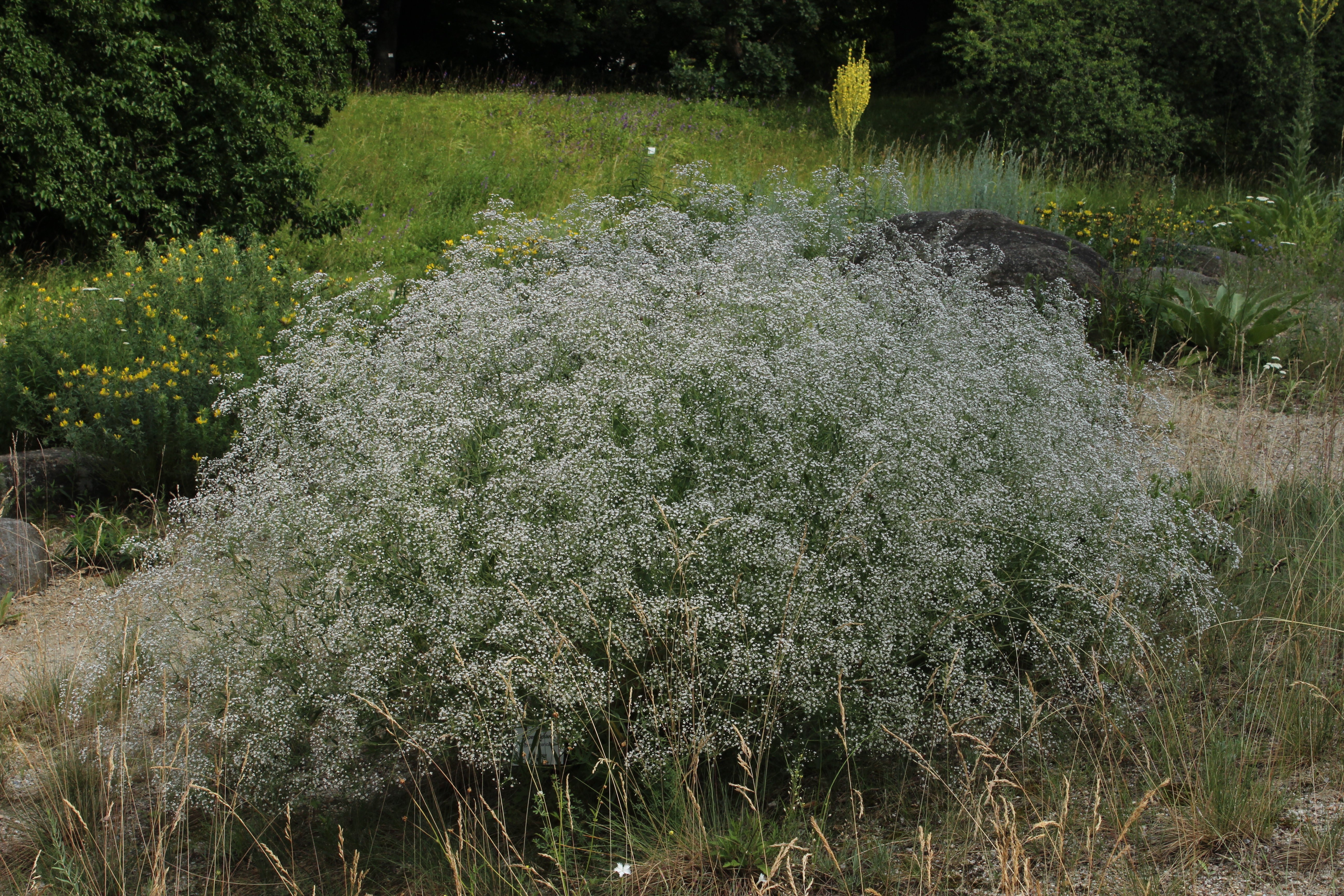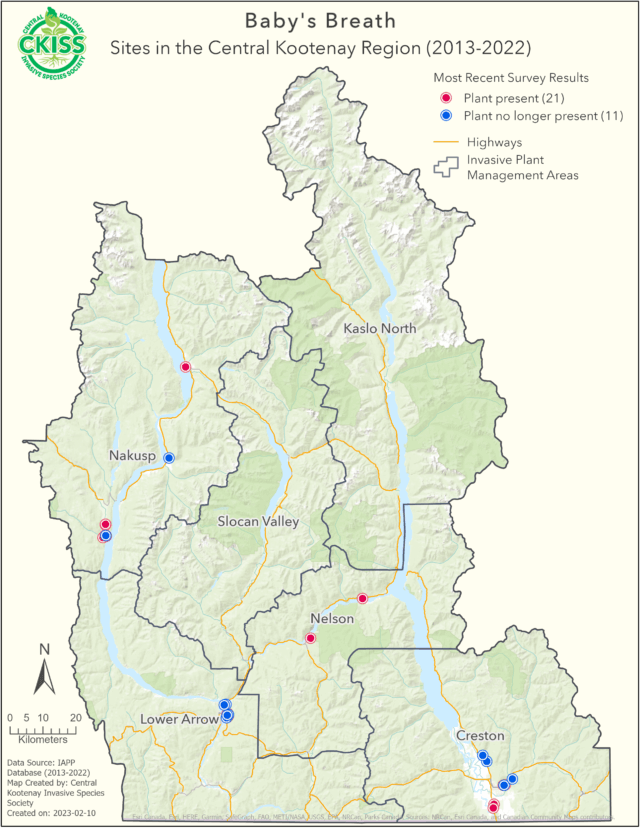Gypsophila paniculata
Description
- Herbaceous perennial
- Can grow up to 1 m tall
- Delicate white, sometimes pink, blossoms
- Bushy stalks, opposite branching pattern
- Establishes in well-drained soils, like sand or gravel
Introduction and spread
- Native to Eastern Europe and Western Asia
- Likely introduced as an ornamental plant
- Produces an enormous amount of seeds and, while tumbling in the wind, disperses them
- Used ornamentally in flower arrangements, allowing seeds to spread
- Deep root system over-stabilizes the soil and out-competes native species
Consequences of invasion
- When mixed with hay, the protein value of the crop diminishes, therefore it is less valuable to livestock or wildlife.
- Outcompetes native and introduced grasses

Status in the CKISS region
- Baby’s breath is present with very limited distribution in the CKISS region, and is currently classified as Eradicate on the CKISS Annual Priority List.
- This species is a top priority to control. Eradication is feasible! Please report any findings.
- Baby’s breath has not been found in the Kaslo or Slocan Invasive Plant Management Areas, where it is classified as Prevent. If it is found in these areas, please report it immediately!
- CKISS is taking steps to monitor and manage this species.
- To learn more about how CKISS classifies and manages invasive species, see our Invasive Species Priority Lists page.
Integrated pest management options
Prevention
- Be conscious when buying flower arrangements.
- Be PlantWise and check wildflower mixes before planting. Use the Grow Me Instead online resource to choose non-invasive plants for your garden.
- Clean equipment and gear before leaving an infested site.
- Dispose of invasive species properly at designated disposal sites.
Mechanical
- Mow to reduce seed production, although not always effective with Baby’s breath.
- Baby’s breath is hard to pull due to it’s deep taproot system.
- Cut the root below the ground surface to prevent re-sprouting.
Biological
- No biocontrol currently available in BC.
Chemical
- Non-specific chemical control is available, in accordance with herbicide labeling details, consult a professional.


